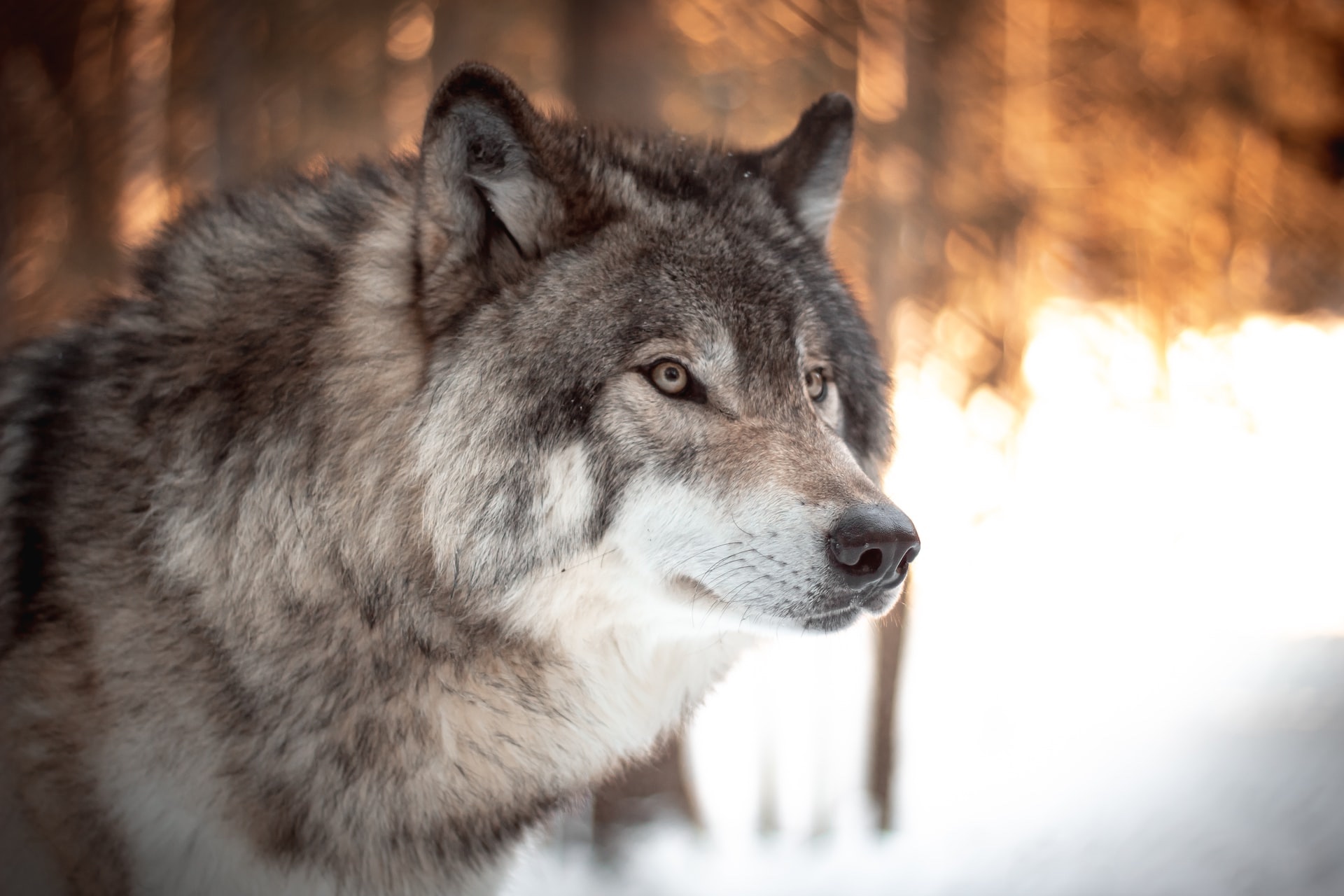Quota for Yellowstone-area wolves focal point for debate in front of Montana Fish and Wildlife Commission.
By Amanda Eggert MONTANA FREE PRESS
The Montana Fish and Wildlife commission on Aug. 25 voted to reinstate a cap on the number of Yellowstone-area wolves that hunters and trappers can kill, abandoning an approach that allowed hunters and trappers to kill 21 wolves last season.
Most of the approximately 100 commenters speaking about wolf management at the Aug. 25 commission meeting expressed frustration with wolf hunting and trapping generally, or the prospect of hunting and trapping wolves that leave the northern border of Yellowstone National Park more specifically.
Those urging the seven-member commission to adopt more permissive wolf hunting regulations accused commissioners of buckling under the Park’s pressure and argued that livestock depredation, declining ungulate populations and robust wolf population estimates deserve more creedence in the body’s decision-making.
Attendance at the commission meeting was so high that even with Commission Chair Lesley Robinson limiting testimony to one minute per person, commissioners spent the entire afternoon working through wolf regulations for the upcoming season.
Such intense interest in the state’s wolf regulations can be partially explained by the number of Yellowstone-area wolves that were felled by bullets or killed in traps or snares upon leaving the park’s northern boundary last season: 21, according to park officials. That represents a significant increase from prior seasons, when hunters and trappers were limited to killing two wolves in the area immediately north of the park.

Last season, commissioners established region-wide, rather than unit-specific, quotas for southwestern Montana. Under that framework, FWP permitted hunters to kill 82 wolves in the agency’s Region 3 before triggering a commission review. That decision resulted in the heaviest harvest of Yellowstone wolves since wolves were reintroduced to the park in the 1990s.
This season, the agency will again manage wolf hunting through a smaller management unit in the area near Yellowstone. FWP will close Unit 313, just north of the park, to further wolf hunting and trapping once hunters and trappers have killed six wolves.
The commission also established quotas for each of the state’s seven wolf hunting and trapping regions outside of Unit 313. Those range from a high of 195 wolves in northwestern Montana’s Region 1 to a low of three wolves in Region 6, which spans the northeastern corner of the state.
Yellowstone National Park wolf biologist Doug Smith told commissioners that the 21 Yellowstone-area wolves killed last season spent most of their time inside park boundaries. Of those 21, 19 belonged to specific packs and the other two were “dispersers” — wolves searching for new habitat or mates. Dispersing wolves play a role in healthy populations by supporting a population’s genetic diversity, Smith said.
Park officials support a six-wolf quota in the region north of the park, Smith said.
Several of the people voicing opposition to wolf hunting and trapping donned red “Kill the Proposal, Not Wolves” t-shirts and accused the commission of being biased against the non-consumptive community, people whose interest in wildlife isn’t tied to an interest in hunting, trapping or fishing for them.
Park County resident Lil Erickson argued that Yellowstone wolves are important to the recreation-oriented businesses in the region, “to the tune of over $82 million” — an apparent reference to a recent economic impact report prepared by RRC Associates and the University of Montana’s Institute for Tourism and Recreation Research. She characterized the state’s recent management record as an assault on wolves that could result in the animals being relisted.
“If wolves regain endangered species status, they will come under the full protection of the law, and the tools ranchers now have to deal with wolves attacking livestock will be gone or curtailed,” Erickson said.
The U.S. Fish and Wildlife Service is overdue to issue a decision on whether it will restore federal protections to Northern Rockies wolves.
Foundation for Wildlife Management Executive Director Justin Webb argued that wolf populations in the Northern Rockies are well beyond the recovery target of 300 established in the 2009 gray wolf delisting rule. He also suggested that wolves are leaving the park due to food stress and disease, and questioned whether the Northern Rockies had long-ago exceeded its carrying capacity for the animals.
“There is no biological justification for quotas or reduction in wolf harvest,” he said. “Your mission to provide stewardship to wildlife and contribute to the quality of life for future generations should be considered in decisions that may lead to overabundant wolf populations. Facts, figures and data do not lie.”
The original proposal forwarded to the commission by FWP called for a 10-wolf quota in Unit 313. Commissioner Pat Tabor said he introduced an amendment to bring that number down to six after weighing input from Yellowstone Superintendent Cam Sholly and Smith, who is the project lead for the Yellowstone Wolf Restoration Project.















